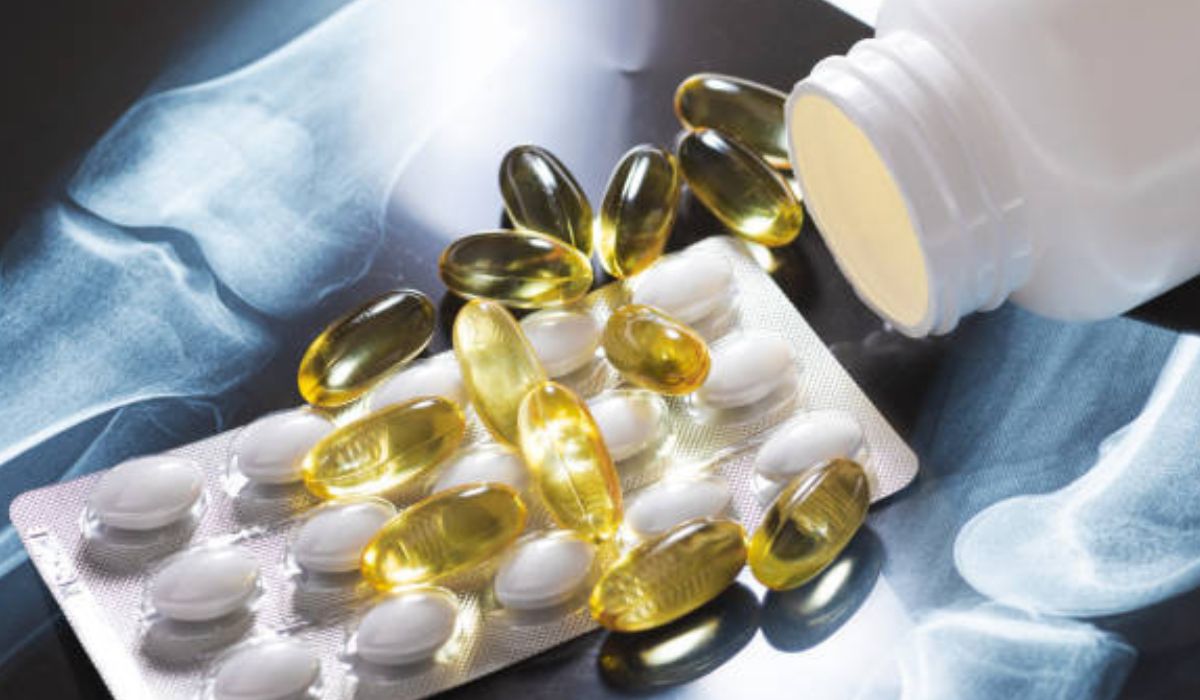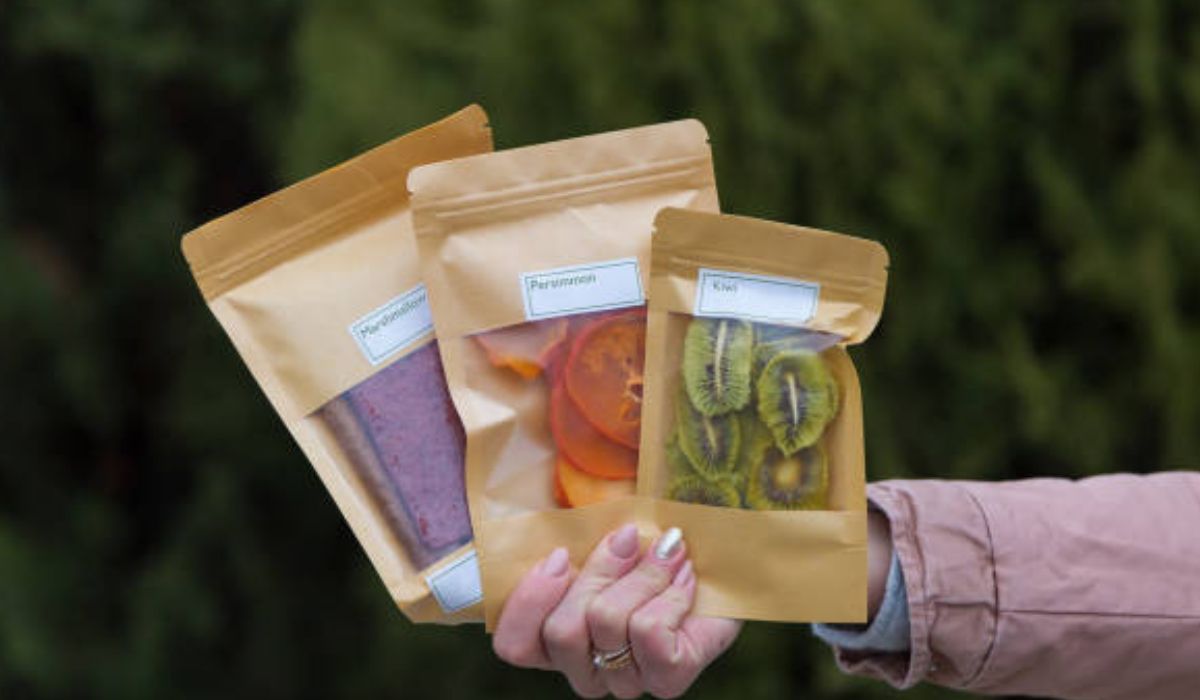Health
Herbal Medicine in Modern Daily Life

Key Takeaways
- Herbal medicine offers natural alternatives for health and wellness.
- Integrating traditional remedies with modern nutrition can enhance overall well-being.
- Understanding potential risks and ensuring quality control is essential when using herbal products.
Over centuries, herbal medicine has shaped health practices in cultures worldwide, offering time-tested solutions for a broad spectrum of ailments and preventive care. In recent years, its relevance has surged as society shifts to a wellness-focused culture valuing holistic, natural approaches. More people are seeking alternatives to pharmaceuticals, using herbal remedies to support the body’s natural healing processes and promote greater balance. Integrating these ancient solutions maintains health in recent years and cultivates a harmonious connection between modern lifestyles and the wisdom of prior generations. By combining evidence-based nutrition, active living, and the knowledge from traditional herbal medicine, individuals can blend the best of both worlds for optimal well-being.
Herbal medicine is much more comprehensive than simply taking a supplement; it represents an entire philosophy that unites cultural heritage, individualized self-care, and a proactive mindset toward health. As you read this article, you’ll find practical and evidence-driven ways to weave herbal support into day-to-day life, exploring applicable supplements, energy boosters, natural beauty solutions, cognitive aids, culinary ideas, and an informed approach to risk and product quality.
Daily Supplements and Wellness Routines
Embracing herbal medicine can begin by adding scientifically supported botanicals and supplements to your everyday routine. Herbs such as echinacea, which bolsters immune function, ginger for digestive comfort and anti-nausea effects, and turmeric for combating inflammation, are staples in many wellness plans. Adaptogens like ashwagandha are praised for regulating stress and stabilizing the body’s nervous system. At the same time, milk thistle provides critical liver protection, especially during a poor diet or toxin exposure.
For many, incorporating herbs is as easy as starting the morning with a warm herbal tea or including capsules at breakfast—a habit that’s both convenient and sustainable. However, sourcing is key. It’s wise to choose reputable brands that detail ingredient origins, undergo third-party quality testing, and prove transparency in their processes. Effective supplementation always goes hand in hand with a wholesome, balanced diet, restful sleep, and convenient and sustainable habits that maximize the benefits of choosing and foster a comprehensive foundation for lasting health.
READ ALSO: What Is Ulcuprazol? Comprehensive Overview
Herbal Remedies for Energy and Vitality
Teas and Adaptogenic Herbs
Shifting from traditional caffeinated drinks to herbal teas or consciously alternating between them can create more stable, long-lasting energy while preventing common side effects like jitteriness or afternoon fatigue. Green tea, with its modest caffeine and potent antioxidants, is a time-honored favorite for those seeking metabolic support and gentle stimulation. Likewise, yerba mate and matcha offer sustained mental clarity and physical stamina without the disruptive energy crashes associated with many popular energy drinks. Green tea has drawn particular attention for its remarkable ability to help the body handle physical, emotional, and mental stress. Popular adaptogens—such as rhodiola, ginseng, eleuthero (Siberian ginseng), and holy basil—regulate stress hormones and support sustained performance for those with demanding lifestyles, students, or athletes. Taken as teas, mixed into smoothies or yogurt as powders, or measured as tinctures, these herbs are supportive allies during challenging periods or heightened activity, contributing resilience and balance.
Fitness and Recovery
Enhancing Performance, Supporting Recovery
Athletes and exercise enthusiasts alike are increasingly embracing herbal medicine to optimize their performance and promote rapid recovery. Ginseng and cordyceps mushrooms, for example, are favored for their proven ability to increase stamina, reduce physical and mental fatigue, and improve overall cardiovascular and respiratory function—traits that translate to stronger, longer workouts.
Herbal medicine is also valuable in post-exercise recovery. Topical applications of arnica and comfrey have been used for generations to address bruising, muscle soreness, and inflammation, allowing active people to bounce back faster. When taken internally, the combination of turmeric and black pepper enhances the absorption of anti-inflammatory compounds, further speeding the recovery process. Herbal baths—including Epsom salts, lavender, and eucalyptus—complete the picture, easing muscles and relaxing the mind after a rigorous training session.
Mental Health and Cognitive Function
Mind-Body Harmony
Several herbal remedies and botanical nootropics support cognitive health, memory, and focus. Ginkgo biloba and bacopa monnieri are among the most studied in this category, with data showing their effectiveness for long-term brain function and age-related cognitive decline. Such supplements can help sharpen thinking, enhance recall, and improve mental processing for students and older adults.
Stress, anxiety, and sleep disturbances often respond favorably to calming herbs like lemon balm, passionflower, and lavender. These botanicals work gently to regulate the nervous system, making it easier to unwind, fall asleep, and achieve restorative rest. Whether brewed as soothing teas or taken as concentrated tinctures, these herbal preparations can be powerful tools for those managing hectic lives. Consistency is crucial, and when integrating herbal support for mental wellness, it’s always best to coordinate with healthcare providers, especially when other therapies are involved. Reputable sources such as this review on herbal effects for cognition provide deeper insights into evidence-based cognitive support.
Herbal Remedies in Cooking
Culinary Use for Everyday Health
The kitchen is one of the most accessible places to invite herbal medicine into your life. Fresh and dried herbs do far more than flavor food—they bring substantial wellness benefits to the everyday table. Basil, for example, is rich in anti-inflammatory compounds and vitamins, while rosemary enhances circulation and supports digestion. Thyme’s antimicrobial components bolster immune defense, especially during seasonal changes.
Cooking with herbs may be as effortless as sprinkling oregano and parsley into sauces, tossing fresh cilantro over salads, or steeping mint leaves into broths and teas. The diverse range of culinary herbs allows for creativity and variety, ensuring nutritious meals are also full of flavor. This approach to herbalism makes it simple to receive vital phytochemicals in your diet daily. Reliable sources such as this guide to healthy herbs and spices highlight practical ways to boost your meals and health.
YOU MAY ALSO LIKE: Foenegriek: Your Kitchen’s Secret Health Powerhouse
Health
Modern Food Display Trends and Their Impact on Customer Choices

Key Takeaways
- Sustainability and Eco-Friendliness: The use of green, recycled, or biodegradable materials in displays attracts environmentally aware customers, while also providing visible evidence of a brand’s commitment to the planet.
- Technology Integration: Digital boards and interactive elements infuse engagement and convenience into dining and purchasing, making ordering easier and experiences more memorable.
- Health and Safety: Clear labeling and hygienic environments improve trust and ensure regulatory compliance, while reassuring customers in an era of elevated health consciousness.
- Minimalist Luxury: Sleek, uncluttered layouts point to quality and exclusivity, inviting customers to savor each carefully curated offering.
- Nature-Inspired Designs: Natural materials and greenery create calming atmospheres and emphasize freshness in both product and philosophy.
- Cultural and Thematic Designs: Imaginative displays rooted in heritage or storytelling enrich the dining experience, fostering a deeper appreciation for global diversity.
Food display is no longer just about showcasing what’s on offer—it’s a vital, strategic element that shapes how and what customers choose to eat, often before they even consciously realize it. From the sustainability of display materials to high-tech presentation, today’s trends reflect a complex interplay of innovation, shifting customer values, and evolving aesthetic sensibilities. In a marketplace where experience and first impressions matter as much as flavor, businesses that focus on thoughtfully designed hot food displays are discovering that visual and interactive cues can make all the difference in influencing both immediate purchase decisions and long-term brand loyalty. The details incorporated into displays have become powerful messaging tools, subtly conveying a business’s priorities, expertise, and commitment to investing in customer satisfaction at every turn.
Whether walking into a gourmet deli, an upscale bakery, or a bustling fast-casual eatery, the way food is displayed creates immediate and lasting impressions that shape dining behavior. Today, professional chefs, store planners, and food service operators are seeking fresh, inventive approaches to presentation—utilizing everything from innovative digital enhancements and customized lighting to nature-inspired settings. This conscious focus on display serves to cater to changing consumer expectations, drive engagement, and ultimately increase sales. As customers become more health-aware, eco-conscious, and experience-driven, every detail of presentation carries weight, shaping a new era in food retail and hospitality where the story behind the food is communicated as clearly as the food itself.
Sustainability and Eco-Friendliness
Modern consumers increasingly want their purchases to align with their values—sometimes prioritizing ethical implications even over convenience or price. Display fixtures and packaging made from reclaimed wood, bamboo, recycled glass, or repurposed metal signal a restaurant or retailer’s commitment to the environment. Such clear visual cues often make sustainability a significant factor in determining where people spend their money, especially among younger demographics. Brands that prioritize compostable containers, recycled display cases, or energy-saving elements, such as LED-lit shelving, not only reduce their ecological footprint but also send a compelling message to ethically minded customers. Integrating these sustainable details into displays demonstrates that an establishment is forward-thinking and conscientious—attributes that foster trust and deeper customer allegiance in a highly competitive industry.
Technology Integration
Digital transformation isn’t just revolutionizing the back office; it’s also reshaping how customers interact with food. Technology now takes the lead in food displays, including dynamic digital menu boards, QR code-scannable info, and interactive touchscreens that allow real-time updates, animated visuals, and engaging virtual recommendations. Restaurants using digital menus have seen notable increases in order values and add-ons as customers engage more with multimedia and visually appealing content. Technology provides a seamless blend of entertainment and convenience, enabling personalization like allergy alerts or suggested pairings based on previous choices. Moving beyond static displays, digital screens turn food counters into interactive storytelling spaces that boost engagement and deepen the emotional connection customers have with a brand.
ALSO READ: The Tortellinatrice: Your Secret to Perfect, Homemade Pasta?
Health and Safety
With health remaining top of mind, especially in a world shaped by post-pandemic habits, food displays now play a crucial role in providing transparency and promoting safety. Clearly visible nutritional information, allergen advisories, and sourcing details empower customers to make informed choices, alleviating dietary concerns and building trust. Modern setups often incorporate touchless technologies for item selection or payment, digital readouts reducing the need for close contact, and antimicrobial surfaces that limit bacterial growth. Layered defenses—such as Plexiglass shields, UV sanitizers for utensils, and self-service protocols—enhance not only actual wellness but also customer peace of mind. These visible measures reassure patrons, while also underscoring a brand’s commitment to meeting or exceeding public health standards in every aspect of its operation.
Minimalist Luxury
Simplicity, when executed thoughtfully, can powerfully elevate the perceived quality of an offering. Minimalist displays are characterized by the strategic use of negative space, premium materials such as marble or polished metal, and warm, subtle lighting—all of which serve to focus customer attention on the core offering rather than distracting extras. These environments encourage guests to appreciate the artistry or heritage behind each piece of food, whether it’s a specialty cheese, handcrafted pastry, or perfectly arranged sushi. This trend resonates with a demographic that sees elegance as synonymous with restraint, exclusivity, and curated experiences over mere abundance. In this space, every bite feels more special, and every purchase is more considered.
Nature-Inspired Designs
Echoing the growing popular connection between wellness and the environment, many establishments have moved toward using natural materials—such as stone, slate, woven fibers, and unfinished wood—in their food display strategies. By incorporating real greenery, live potted herbs, and biophilic design concepts into their displays, retailers can amplify the perception of freshness and healthfulness across their offerings. Displays that evoke open-air markets or farm stands not only cultivate a calming, relaxed atmosphere but also encourage patrons to spend more time in the space, returning for repeat visits. Natural displays foster trust by drawing visual parallels to farms and markets; for example, displaying artisan breads on wooden shelves beside planters of rosemary and thyme creates an authentic, earthy feel that appeals to those seeking wholesome, organic fare and a break from artificiality and excess packaging.
Cultural and Thematic Designs
Food is nourishment, but it’s also memory, identity, and adventure—and the best displays speak to all of these layers. Food displays that embrace cultural motifs, regional storytelling, or themed décor can transform what might be a standard meal into a memorable and meaningful experience. Restaurants specializing in Mediterranean, Asian, or Latin flavors often accessorize their layouts with imported ceramics, vibrant textiles, or traditional patterns that evoke a specific time or place. This immersive approach not only enhances brand distinctiveness but also educates customers about global gastronomy, reinforcing the current consumer appetite for novelty, authenticity, and travel-inspired flavor adventures. Thematic display strategies can help foster inclusivity, initiate conversation, and make each dining event feel special, building a stronger sense of community and brand loyalty in the process.
Conclusion
Modern food display trends do far more than catch the eye—they act as the architect of emotional responses, the voice of brand values, and the silent guide for customer choices. As sustainability, technology, authenticity, and aesthetics grow in importance, the bar for what constitutes effective food presentation continues to rise. Establishments that adapt to these evolving expectations—offering eco-conscious materials, digital innovation, pristine safety protocols, minimalist beauty, and compelling storytelling—stand to capture customer loyalty and outperform the competition in an increasingly discerning and dynamic marketplace.
YOU MAY ALSO LIKE: Cuşcuş Recipes & Tips for Food Lovers
Health
Omega Scan: The Ultimate Guide to Proactive Health

Ever left a doctor’s appointment with more questions than answers? You know something’s off—maybe it’s lingering fatigue, mysterious aches, or just a gut feeling—but standard tests come back “normal.” It’s like your body is whispering a problem, but no one can quite hear it.
What if you had a way to listen?
That’s the promise of the Omega Scan, a revolutionary approach to health that’s shifting the paradigm from reactive treatment to proactive, holistic discovery. This isn’t your average check-up. It’s a deep dive into your body’s inner workings, designed to uncover the root causes of issues long before they become major problems.
Let’s pull back the curtain and explore everything you need to know.
What Exactly Is an Omega Scan? Demystifying the Tech
First things first, let’s clear up a common misconception. The Omega Scan isn’t a single, magical machine. Instead, think of it as a comprehensive health assessment philosophy. It typically uses advanced technologies like:
- Bioelectrical Impedance Analysis (BIA): This painless method sends tiny, imperceptible electrical currents through your body to measure things like body composition (muscle, fat, water).
- Thermography: It uses a special camera to map the heat and blood flow on your skin’s surface, identifying areas of inflammation.
- Heart Rate Variability (HRV) Analysis: This measures the subtle variations in the time between your heartbeats, a key indicator of your nervous system balance and stress resilience.
The real magic happens when the data from these and other tests are woven together into a single, comprehensive report—your personal “Omega” report. The term “Omega” signifies the end, the complete picture, much like the last letter of the Greek alphabet. It’s about getting the whole story.
Why Would You Get One? The Game-Changing Benefits
So, why go through this instead of just getting a blood test? Your standard blood panel is like checking the oil in your car. It’s essential, but it doesn’t tell you about the wear on your brakes, your tire alignment, or your transmission fluid.
An Omega Scan is like a full-diagnostic computer check. Here’s what it can help you achieve:
- Uncover Hidden Inflammation: Chronic inflammation is a silent fire linked to everything from arthritis to heart disease. The scan can pinpoint its location and intensity long before you feel constant pain.
- Assess Your Body’s True Age: Is your body older or younger than your chronological age? The scan can analyze cellular health to give you a “biological age,” a powerful motivator for lifestyle changes.
- Understand Your Stress Response: It can objectively show how well your body is handling stress, whether it’s from work, diet, or lack of sleep, by analyzing your autonomic nervous system.
- Get a Baseline for Your Health: Knowing your numbers when you’re healthy is incredibly valuable. It creates a personal benchmark, making it easy to spot when things start to drift off course in the future.
The Omega Scan vs. Traditional Medicine: A Side-by-Side Look
This is where people often get confused. Is this alternative medicine? Is it replacing your doctor? Not at all. It’s a complementary approach.
| Feature | Traditional Doctor Visit | Omega Scan Approach |
| Focus | Diagnosing a specific disease or symptom | Preventing illness & optimizing wellness |
| Method | Often reactive (you feel sick, you go) | Proactive (you go to stay well) |
| Data | Blood tests, imaging for specific issues | Holistic data (body systems, stress, inflammation) |
| Goal | Find a pathology and treat it with drugs/surgery | Identify imbalances and correct them with lifestyle |
Think of it this way: if your car breaks down on the highway, you need a mechanic (your doctor) to fix the specific problem. But if you want to prevent a breakdown, you get regular tune-ups that check the entire vehicle—that’s the Omega Scan.
Read also: Mega-Personal.net Health Archives: Your Gateway to Health Wisdom
What to Expect During Your Scan: A Step-by-Step Walkthrough
Nervous about what happens? Don’t be. The process is typically non-invasive, painless, and surprisingly simple.
- The Consultation: It all starts with a conversation. A trained practitioner will sit down with you to discuss your health history, goals, and any specific concerns.
- The Scanning Process: You’ll likely be asked to sit or lie down comfortably.
- For BIA, you might have electrodes placed on your hands and feet.
- For thermography, you’ll stand in a temperature-controlled room while a camera takes images.
- It’s all completely passive—you just relax.
- The Data Integration: This is where the technology works its magic. The different data streams are fed into sophisticated software.
- The Results & Plan: This is the most important part. You’ll receive a detailed, color-coded report that’s easy to understand. Your practitioner will walk you through every finding, explaining what it means for you. They will then help you create a personalized action plan, which could include dietary changes, specific supplements, stress-management techniques, or exercise recommendations.
Who is the Omega Scan For? (Spoiler: Probably You)
A common myth is that this is only for the “worried well” or the super-rich. The reality is, it’s a powerful tool for a wide range of people:
- The “Frustrated & Healthy”: You feel tired, bloated, or “off,” but your doctor says you’re fine.
- The Performance-Driven: Athletes and executives use it to optimize their physical and mental output.
- The Prevention-Minded: Anyone with a family history of chronic disease (like diabetes or heart conditions) who wants to get ahead of it.
- Those on a Healing Journey: People managing conditions like Long COVID, fibromyalgia, or chronic fatigue can find invaluable insights into their body’s imbalances.
5 Practical Tips to Get the Most From Your Omega Scan
Ready to take the plunge? Here’s how to ensure you get the best possible results.
- Do Your Research: Not all clinics are created equal. Look for reputable wellness centers or functional medicine practices with certified practitioners and proven technology.
- Come Prepared: Bring a list of your medications, supplements, and any recent lab results. The more information your practitioner has, the better.
- Be Honest and Open: This is a judgment-free zone. Be candid about your diet, stress levels, sleep habits, and lifestyle. Honesty leads to a more accurate plan.
- Hydrate Normally: Don’t make drastic changes before your scan. Drink water as you normally would, unless specifically instructed otherwise.
- View it as a Starting Line: The scan isn’t an end in itself. It’s the beginning of a more informed, empowered health journey. Commit to following up and implementing the personalized plan.
Your Health, in High Definition
The Omega Scan represents a powerful shift in how we view healthcare. It moves us from being passive patients waiting for sickness to active participants in crafting our own vitality. It gives you a language to understand what your body has been trying to tell you all along.
By looking at the interconnected systems of your body, it provides a map—not just to avoid illness, but to thrive and feel your absolute best. In a world of quick fixes, it offers a path to sustainable, long-term wellness.
So, what’s your take? Are you ready to see your health in a whole new light?
FAQs
1. Is the Omega Scan safe?
Absolutely. The technologies used, like BIA and thermography, are non-invasive, painless, and do not use ionizing radiation (like X-rays). They are considered extremely safe for repeated use.
2. Will my insurance cover the cost of an Omega Scan?
This depends heavily on your insurance provider and plan. Since it’s often considered a preventive or wellness service, it may not be covered. It’s best to check directly with your insurance company and the scanning clinic for a definitive answer.
3. How is this different from a full-body MRI?
A full-body MRI is a detailed anatomical scan, looking for structural problems like tumors or injuries. The Omega Scan is a functional assessment. It looks at how your body’s systems are working—your metabolism, inflammation levels, and nervous system balance. They provide different, complementary types of information.
4. How often should I get one?
For most people, getting a scan once a year is sufficient to track trends and progress. If you’re addressing a specific health issue, your practitioner might recommend more frequent scans (e.g., every 3-6 months) initially.
5. Can the Omega Scan diagnose a specific disease?
No, and this is a critical distinction. The Omega Scan is a screening and assessment tool designed to identify risk factors and imbalances. It is not intended to diagnose diseases like cancer or multiple sclerosis. Any concerning findings should always be followed up with your primary care physician for a formal diagnosis.
6. Do I need a doctor’s referral to get one?
In most cases, no. You can typically book an appointment directly with a clinic that offers these services. However, it’s always a good idea to keep your primary care doctor in the loop about any health assessments you undertake.
7. What if the scan shows a problem?
This is precisely the point! The goal is to find imbalances early. Your practitioner will use this information to create a proactive, personalized plan to correct the issue through lifestyle, nutrition, and other natural interventions, potentially preventing it from developing into a more serious condition.
You may also like: Dignotech: The Silent Revolution Transforming Healthcare with Humanity
Health
Flow Pouches: Your Natural Energy Boost, Simplified

You know the feeling. It’s 3 PM. Your focus is waning, your eyelids feel heavy, and the siren call of the vending machine or another cup of coffee is growing louder. For decades, our solutions have been a sugary fix or a jittery caffeine crash. But what if your energy boost could come from gentle, plant-based ingredients, delivered in a way that’s as modern and convenient as your smartphone? This isn’t a far-off fantasy; it’s the reality offered by flow pouches, a discreet and effective player in the world of natural energy boosters.
What Exactly Are Flow Pouches?
Let’s explore it. Imagine a small, portable pouch—similar to a tea bag, but designed to be used without a cup or hot water. Inside this pouch is a precise blend of natural ingredients like adaptogenic herbs, vitamins, and minerals, all finely milled into a powder.
You don’t brew it. Instead, you place the pouch between your gum and cheek, allowing the ingredients to be absorbed directly into your bloodstream through the buccal mucosa in your mouth. This method is the “flow”—a slow, steady release that gives the product its name. It’s a hands-free, mess-free experience that you can use anywhere, anytime, without drawing attention.
Why Flow Pouches are Changing the Energy Game
The rise of flow pouches isn’t just a fad; it’s a response to a growing demand for smarter, healthier wellness products. They address several pain points that traditional energy solutions can’t.
Convenience is King.
Unlike brewing a tea or mixing a bulky powder into a shaker bottle, a flow pouch is the ultimate in on-the-go wellness. It fits in your pocket, wallet, or the smallest compartment of your bag. You can use it during your commute, right before a meeting, or in the middle of a long hike without stopping.
A Clean, Sustained Energy Lift.
The sublingual and buccal absorption in your mouth allows the active compounds to bypass the digestive system. This means a faster onset of effects and, more importantly, a smoother, more sustained release of energy. You avoid the sharp spike and subsequent crash commonly associated with coffee and energy drinks.
Discretion and Taste.
Most flow pouches are designed to be virtually invisible when in use. The ingredients are often pleasantly flavored, leaving a fresh taste in your mouth rather than the bitter aftertaste of some supplements or the stained teeth from coffee.
Precision Dosing.
Each pouch is a pre-measured serving. There’s no guessing, no messy scoops, and no risk of accidentally taking too much. This takes the guesswork out of your wellness routine.
The Natural Powerhouses Inside Your Pouch
So, what’s actually inside these clever little pouches that gives you that clean energy? The magic lies in nature’s own energizing and balancing agents.
- Adaptogenic Herbs: These are the rock stars of the natural energy world. Plants like Ashwagandha and Rhodiola Rosea don’t just give you energy; they help your body manage stress and fatigue more effectively, promoting a state of balance.
- Green Tea Extract: A well-known source of natural caffeine, it also provides L-Theanine, an amino acid that promotes calm focus—effectively smoothing out caffeine’s rough edges.
- B-Vitamins: Often called the “spark plugs” of the body, B vitamins are essential for converting food into usable energy.
- Mint and other Botanical Blends: These provide the refreshing flavor and can also aid in digestion and mental clarity.
Table: Common Natural Energy Ingredients in Flow Pouches
| Ingredient | Primary Benefit | How It Feels |
| Green Tea Extract | Provides steady caffeine + L-Theanine for focus. | Alert yet calm, without jitters. |
| Ashwagandha | An adaptogen that helps the body resist stress. | A sense of balanced energy and reduced fatigue. |
| Rhodiola Rosea | An adaptogen known to fight mental and physical fatigue. | Improved concentration and endurance. |
| Guarana Seed | A source of natural caffeine for a direct energy lift. | A noticeable boost in alertness. |
| B-Vitamin Complex | Supports cellular energy production. | Foundational energy support from within. |
Read also: Oridzin: Nature’s Hidden Gem for Health and Wellness
Flow Pouches vs. The Usual Suspects
How do these pouches really stack up against the drinks we all know too well?
Versus Coffee:
Coffee is a beloved ritual, but it can cause jitters, acidity, and stained teeth. Flow pouches offer a neutral pH, no stains, and a more balanced energy curve. However, they lack the social and sensory experience of a warm cup of coffee.
Versus Energy Drinks:
This is where flow pouches shine brightest. Energy drinks are often laden with sugar, artificial colors, and preservatives, leading to a predictable crash. Flow pouches provide a zero-sugar, clean-ingredient alternative with a similar or better energizing effect.
Versus Energy Shots:
While convenient, many energy shots have a harsh, medicinal taste and a potent, sometimes overwhelming, caffeine hit. Flow pouches are generally more gentle on the stomach and offer a more pleasant tasting experience.
How to Get the Most Out of Your Flow Pouch
Using a flow pouch is simple, but a few tips can optimize your experience.
- Start Slow. If you’re new to flow pouches or the ingredients inside, start with half a pouch to see how your body reacts.
- Place it Properly. Tuck the pouch comfortably between your gum and upper lip. The key is contact with your cheek.
- Let it Be. Don’t chew or swallow the contents. Simply let it sit and do its work. The effects will typically begin within 5-15 minutes and can last for an hour or more.
- Stay Hydrated. Drink water before, during, and after use. Proper hydration is key to all bodily functions, including energy metabolism.
- Time it Right. It’s best to avoid using them too late in the day, as the energizing effects could interfere with your sleep.
3 Actionable Tips to Try Today
Ready to integrate flow pouches into your life? Here’s how to start smart.
- Audit Your Current Boost. For one day, write down every coffee, soda, or snack you use for energy. Notice the associated crashes. This awareness will make the benefits of a natural alternative crystal clear.
- Identify Your Personal Slump Zone. Is it the 10 AM meeting lull or the post-lunch coma? Proactively use a flow pouch 15 minutes before that period hits, turning your weakness into a window of productivity.
- Pair with a Power Habit. Stack your flow pouch with a positive habit. For example, use one during your five-minute morning meditation or while you’re walking to work. This habit-stacking makes it stick.
The Future is in the Pouch
The wellness industry is constantly evolving, moving towards greater personalization and convenience. Flow pouches sit squarely at this intersection. They represent a shift away from one-size-fits-all, inefficient delivery methods toward a more nuanced, user-centric approach to well-being. They prove that taking care of yourself doesn’t have to be a chore; it can be as simple and seamless as a small pouch that fits perfectly into your modern, fast-paced life.
Have you tried using flow pouches as your natural energy booster? What was your experience? Share your thoughts and favorite brands in the comments below!
FAQs
1. Are flow pouches safe?
When made by reputable companies using high-quality, transparently listed ingredients, flow pouches are generally considered safe. However, always check with your healthcare provider before trying any new supplement, especially if you are pregnant, nursing, on medication, or have a pre-existing health condition.
2. Can I become addicted to flow pouches?
Flow pouches themselves are not considered addictive. However, if they contain ingredients like caffeine, you can develop a dependence on that substance, similar to coffee. It’s always wise to use any stimulant product in moderation and take occasional breaks.
3. How long does one pouch last?
Most people keep a pouch in for 15-30 minutes, or until the flavor dissipates. The effects, however, can last for 60-90 minutes as the ingredients are steadily absorbed.
4. Do they stain your teeth?
No. One of the significant advantages of flow pouches over coffee and tea is that they do not stain teeth, as the contents are not swished around the mouth like a liquid.
5. Are they bad for the environment?
This depends on the brand. Many companies are now using compostable or recyclable materials for their outer packaging and the pouches themselves. It’s best to check the company’s sustainability policy before purchasing.
6. Can I use more than one per day?
It’s possible, but it’s not generally recommended to exceed the manufacturer’s suggested use. Start with one and see how you feel. More is not always better when it comes to supplements.
7. Where can I buy them?
They are widely available online through brand websites and major retailers like Amazon. You can also find them in an increasing number of health food stores, supplement shops, and even some modern cafes.
You may also like: Foenegriek: Your Kitchen’s Secret Health Powerhouse
-

 Tech9 months ago
Tech9 months agoExplore iZoneMedia360 .Com Features & Benefits
-

 Celebrity10 months ago
Celebrity10 months agoWho Is Andrew Santino Wife? The Full Story
-

 Entertainment10 months ago
Entertainment10 months agoRemembering Melanie Olmstead Yellowstone’s Unsung Hero
-

 Uncategorized10 months ago
Uncategorized10 months agoPrairie Dog Guide: Habitat, Behavior, and Conservation
-

 News10 months ago
News10 months agoHowling Mine vs. Time-Tearing Morganite: A Strategic Card Comparison
-

 Apps & Games9 months ago
Apps & Games9 months agoThe Pizza Edition Games: A Perfect Slice of Fun and Flavor
-

 Business9 months ago
Business9 months agoHow Influencersginewuld Shapes the Future of Branding
-

 Celebrity10 months ago
Celebrity10 months agoA Deep Dive into Jeremy Allen White Movies and TV Shows





